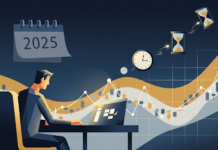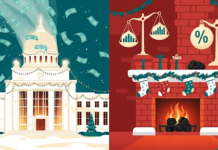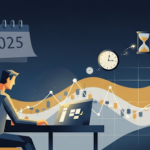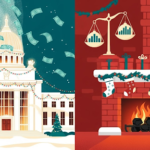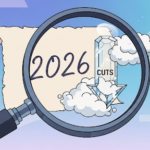A Stagflation Storm?
As we dive into August, the market’s pulse is quickening with anticipation. The latest inflation data is set to be released, and all eyes are on the Consumer Price Index (CPI) report for July. Expectations are mixed, with some predicting a modest uptick while others warn of an impending stagflation risk, the likes of which haven’t been seen since the 1970s. Stagflation, a mix of stagnant economic growth and persistent inflation, could spell trouble for markets already grappling with a potential recession.
But it’s not all doom and gloom. This week’s edition of The Market Pulse is packed with insights that can help you navigate these choppy waters. In our Main Topic, we dissect the CPI data and its implications for the broader economy, particularly the Fed’s next moves. And in our This Week I Learned segment, we’ll explore how historical patterns of inflation could guide today’s investment strategies.
Lastly, don’t miss our Fun Corner for a light-hearted take on the market’s current woes—because even in the stormiest weather, there’s always room for a bit of humor.
Stay tuned, stay informed, and let’s make sure you’re not just weathering the storm, but coming out stronger on the other side.
This Week I Learned…
Stagflation: Yesterday’s Fear, Today’s Reality?
Stagflation—a term that sends shivers down the spine of any seasoned investor. It’s not just a buzzword from the 1970s; it’s a very real possibility in today’s economic landscape. This week, I learned that stagflation is no longer just a historical footnote but a potential threat we might be facing again.
What is stagflation? It’s a period marked by slow economic growth, high unemployment, and rising prices. This toxic combination can be particularly challenging for central banks, as traditional monetary policy tools become less effective. For instance, the Federal Reserve might find itself in a tight spot: raising interest rates to curb inflation could further slow down an already weak economy, while lowering rates might exacerbate inflation.
Looking back, the last time the U.S. grappled with stagflation was during the 1970s, driven by an oil embargo that spiked energy prices and pushed inflation higher while economic growth stagnated. Fast forward to today, and we’re seeing eerie similarities—rising energy prices, supply chain disruptions, and geopolitical tensions could be the catalysts that bring stagflation back into the limelight.
Understanding stagflation and its potential impact on your investments is crucial. This isn’t just about the past; it’s about preparing for what could be a challenging economic future. As you consider your investment strategies, remember that diversification and hedging against inflation might be more important than ever.
The Fun Corner
Stagflation: The Funny Side (Yes, There Is One)
In the midst of all the serious talk about stagflation, let’s take a moment to lighten up the mood with some market-related humor. After all, even in uncertain times, a little laughter can go a long way.
Did you hear about the stock market’s New Year’s resolution? It promised to shed some weight, but then it met stagflation and realized it would be carrying extra baggage all year!
And remember: If stagflation were a superhero, its powers would be shrinking wallets and stretching patience—two things no one ever asked for!
July CPI Preview: A Stagflation Warning?
The upcoming CPI report for July has investors on edge. With core CPI expected to tick higher, the possibility of stagflation—a combination of slow growth and persistent inflation—looms large. Stagflation is particularly concerning because it limits the Federal Reserve’s options. Typically, the Fed would cut interest rates to stimulate growth, but with inflation still a threat, this might not be feasible.
Recent trends in core CPI inflation have shown some volatility. After a spike earlier this year, the figures have been moderating. Yet, the Cleveland Fed’s Inflation Nowcast suggests that the disinflationary trend could be short-lived, predicting a higher core CPI for both July and August. This potential uptick is attributed to several factors, including stubbornly high shelter inflation and the specter of rising energy prices due to geopolitical tensions.
Energy prices are a key factor to watch. A potential conflict in the Middle East could lead to a supply shock, driving oil prices—and, consequently, headline inflation—higher. This scenario could trap the Fed between a rock and a hard place: unable to lower rates without fueling inflation, yet unable to raise them without worsening economic stagnation.
For the S&P 500 and broader markets, the implications are clear. A stagflationary environment could lead to a recessionary bear market, with the Fed unable to offer the usual backstop of aggressive rate cuts. Investors need to prepare for the possibility of a prolonged period of market volatility, where traditional safe havens may offer the best refuge.
The Last Say
Stagflation: A Risk We Can’t Ignore
As we close this edition of The Market Pulse, it’s clear that the specter of stagflation is more than just a theoretical risk. The upcoming CPI report could very well set the tone for the markets in the coming months. Investors are bracing for the possibility that the Fed might not be able to act as swiftly as they hope, especially if inflation remains sticky.
The potential for rising energy prices due to geopolitical tensions only adds another layer of complexity. As we’ve discussed, this could push inflation higher, forcing the Fed into a precarious balancing act between combating inflation and supporting a weakening economy.
For investors, this means staying vigilant and being prepared to adapt to a rapidly changing environment. Diversification, careful risk management, and perhaps a greater emphasis on inflation-resistant assets might be the strategies that help weather the potential stagflation storm.
In these uncertain times, knowledge is power. Stay informed, stay flexible, and remember that markets are cyclical—what goes up, must eventually come down, and vice versa. Until next time, keep your eyes on the data and your strategies sharp.

